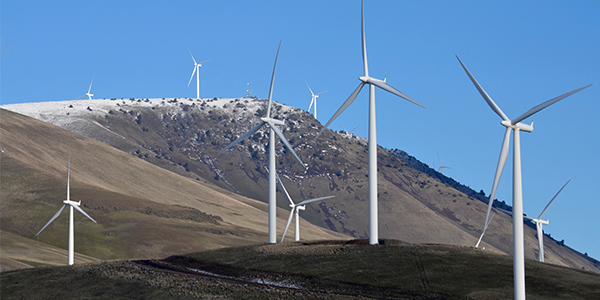By Hudson Sangree
Washington state lawmakers approved legislation Monday requiring the state to rely entirely on zero-emissions and renewable energy by 2045.
Gov. Jay Inslee, a Democratic presidential candidate who heavily promoted the effort, said he looked forward to signing SB 5116 just after the state Senate voted to send it to his desk. Once that happens, Washington will become the fifth state — after Hawaii, California, New Mexico and most recently Nevada — to adopt a 100% clean energy mandate.
“On this Earth Day, I couldn’t be more proud of the Legislature’s action to pass the country’s most forward-looking clean energy bill,” Inslee said in a statement. “[T]his bill will fundamentally transform Washington’s energy future and transition us to 100% clean energy.”
Nevada Gov. Steve Sisolak signed legislation Monday to achieve a similar outcome. SB 358 requires Nevada to produce enough carbon-free electricity by 2050 to meet all of the state’s needs and to get half its electricity from non-emitting sources by 2030.
“Renewable energy is a major cornerstone of my economic development plan, and this bill will put Nevada back on the path toward renewable energy leadership on a nationwide level and continue to bring well-paying jobs to our communities,” Sisolak said in a signing statement.
Also on Monday, Public Service Company of New Mexico announced it was setting a goal of providing 100% emissions-free energy by 2040, five years ahead of the requirements set by the state’s clean-energy mandate. PNM said it was the first large investor-owned utility in the nation to establish such a goal.
“We … realized that we were not only up for the challenge of 100% emissions-free by 2045 but thought we can actually do it five years early while maintaining reliability and affordability for customers,” Pat Vincent-Collawn, PNM Resources chairman, said in a news release.
“The future is changing fast,” Vincent-Collawn said. “Here at PNM we are proud of how far we have come but know there is still so much to be done.”
The number of states, cities and corporations going all green has grown so quickly that some call it contagious.
The Sierra Club, which keeps an up-to–date list of state and local governments to join the movement, said this week 131 cities and counties, from Florida to Alaska, have committed to getting all their electricity from non-polluting and renewable resources and five cities — including Aspen, Colo., and Kodiak Island, Alaska — have met that goal.
The rapid spread raises concerns among utilities and regulators. During a meeting last week in Salt Lake City, Utah, many expressed concerns about having enough electricity to meet demand and maintain grid stability as fossil-fuel plants retire and intermittent renewables, such as wind and solar, proliferate. (See Westerners Wrestle with Resource Adequacy, Grid Reliability.)
Some who spoke at the joint meeting of the Committee on Regional Electric Power Cooperation and the Western Interconnection Regional Advisory Body (CREPC-WIRAB) said parts of the West could experience shortages soon.
Ann Rendahl, a Washington state regulator, said in the Pacific Northwest, “There’s increasing uncertainty there is sufficient resource adequacy in the next five years … Everyone is agreeing we’re approaching this point.”
David Mills, Puget Sound Energy’s senior vice president of policy and energy supply, said coal plants are closing, intermittent resources are saturating the market and natural gas plants, the “last backstop of reliability,” are retiring. He and other speakers urged Western states and utilities to create a centralized entity to oversee supply.





